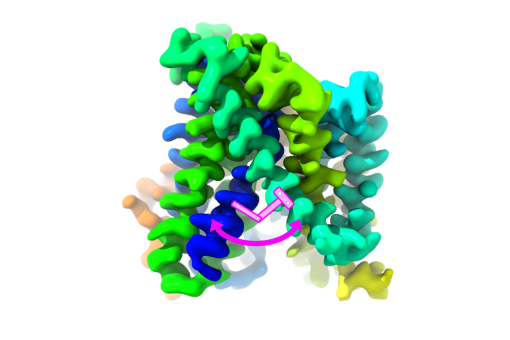Images
Participants


Contact

Researchers at IRB and IBMB-CSIC, in Barcelona, and at the University of Wageningen, in the Netherlands, reveal how auxin hormone-regulated proteins activate developmental genes in plants.
Auxins are key components of plant growth and have many applications in agriculture. The biomedical application of these hormones are also being addressed.
The study is published this week in the scientific journal Cell.
A joint study published in Cell by the teams headed by Miquel Coll at the Institute for Research in Biomedicine (IRB Barcelona) and the Institute of Molecular Biology of CSIC, both in Barcelona, and Dolf Weijers at the University of Wageningen, in the Netherlands, unravels the mystery behind how the plant hormones called auxins activate multiple vital plant functions through various gene transcription factors.
Auxins are plant hormones that control growth and development, that is to say, they determine the size and structure of the plant. Among their many activities, auxins favor cell growth, root initiation, flowering, fruit setting and delay ripening. Auxins have practical applications and are used in agriculture to produce seedless fruit, to prevent fruit drop, and to promote rooting, in addition to being used as herbicides. The biomedical applications of these hormones as anti-tumor agents and to facilitate somatic cell reprogramming (the cells that form tissues) to stem cells are also being investigated.
The effects of auxins in plants was first observed by Darwin in 1881, and since then this hormone has been the focus of many studies. However, although it was known how and where auxin is synthesized in the plant, how it is transported, and the receptors on which it acts, it was unclear how a hormone could trigger such diverse processes.
At the molecular level, the hormone serves to unblock a transcription factor, a DNA-binding protein, which in turn activates or represses a specific group of genes. Some plants have more than 20 distinct auxin-regulated transcription factors. They are called ARFs (Auxin Response Factors) and control the expression of numerous plant genes in function of the task to be undertaken, that is to say, cell growth, flowering, root initiation, leaf growth etc.
Using the Synchrotron Alba, in Cerdanyola del Vallès (Barcelona), and the European Synchrotron, in Grenoble, structural biologist Dr. Miquel Coll and his team analyzed the DNA binding mode used by various ARFs.
For this purpose, the scientists prepared crystals of complexes of DNA and ARF proteins obtained by Dolf Weijers team in Wageningen, and then shot the crystals with high intensity X-rays in the synchrotron to resolve their atomic structure. The resolution of five 3D structures has revealed why a given transcription factor is capable of activating a single set of genes, while other ARFs that are very similar with only slight differences trigger a distinct set.
“Each ARF recognizes and adapts to a particular DNA sequence through two binding arms or motifs that are barrel-shaped, and this adaptation differs for each ARF,” explains Roeland Boer, postdoctoral researcher in Miquel Coll’s group at IRB Barcelona, and one of the first authors of the study.
The ARF binding mode to DNA has never been described in bacteria or animals. “It appears to be exclusive to plants, but we cannot rule out that it is present in other kingdoms. Our finding is highly relevant because we have revealed the ultimate effect of a hormone that controls plant development on DNA, that is to say, on genes.” says Miquel Coll.
Reference article:
Structural basis for DNA binding specificity by the auxin-dependent ARF transcription factors
D. Roeland Boer, Alejandra Freire-Rios, Willy van den Berg, Terrens Saaki, Iain W. Manfield, Stefan Kepinski, Irene López-Vidrieo, Jose Manuel Franco, Sacco C. de Vries, Roberto Solano, Dolf Weijers, and Miquel Coll
Cell (2014) 156, 577-589 http://dx.doi.org/10.1016/j.cell.2013.12.027
About IRB Barcelona
The Institute for Research in Biomedicine (IRB Barcelona) pursues a society free of disease. To this end, it conducts multidisciplinary research of excellence to cure cancer and other diseases linked to ageing. It establishes technology transfer agreements with the pharmaceutical industry and major hospitals to bring research results closer to society, and organises a range of science outreach activities to engage the public in an open dialogue. IRB Barcelona is an international centre that hosts 400 researchers and more than 30 nationalities. Recognised as a Severo Ochoa Centre of Excellence since 2011, IRB Barcelona is a CERCA centre and member of the Barcelona Institute of Science and Technology (BIST).







